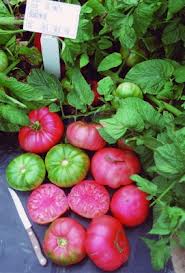For the many Canadian gardeners, new and experienced, who grow tomatoes, there will be a new type of tomato plant available next year that will be stronger and more productive, but still very tasty.

I wrote about new roses that are grafted onto the rootstock of a hardier and disease-resistant rose to create a rose with the best qualities of both. It’s a technique that has been used for roses and grapes for a number of years. Indeed, grape vines grown in Ontario wouldn’t survive here if they weren’t grafted onto the rootstocks of indigenous, hardier varieties.
Now, grafting the rootstock of a strong, vigorous tomato variety onto the seedling of a more delicious and desirable tomato means home gardeners can grow tomatoes with the vigour of specific rootstock and the taste of specific fruit. A strong rootstock will make the whole tomato plant healthier, increasing its fruit yield, length of harvest and resistance to blight.
This technique has been used in Europe on field crops for a number of years, and more recently a number of grafted tomatoes have been grown in the U.S. The plan is to begin selling grafted tomato plants in some Ontario stores next year.
I spoke to Bob Martin at Martin Farms in Vineland Station (not too far from St. Catharines, where I visited Stokes Seeds trial gardens) to find out how this process works. He’s currently growing ‘Brandywine’ tomato plants on the rootstock of another, hardier variety, and will be providing plants for Loblaws, Sheridan Nurseries and other stores to sell to home gardeners next year.
The tomato he’s using for the rootstock doesn’t yield especially tasty tomatoes, but has other benefits like resistance to blight and a longer and bigger harvest. Bob told me almost any variety can be grafted “on the top”; ‘Brandywine’ was chosen for its flavour. His grafted ‘Brandywine’ tomatoes fruited about a week earlier than any of his other varieties this year, and he expects the plants will fruit later into the fall season, as well.
The process begins by seeding ‘Brandywine’ and the plant to be used as the rootstock. When the seedlings are about two inches (5 cm) tall, the top is cut off the rootstock, and the bottom is cut off of the ‘Brandywine’ seedling. The graft is initially held together with a piece of plastic, similar to a clear plastic coin holder.
The plants are then grown as regular tomato plants with just a few differences. For example, when transplanting tomatoes, you hill the soil up around the stem so that more roots branch off, creating a stronger root system for the plant. You don’t do this with grafted tomatoes, because you want roots only coming off the rootstock of the plant. The graft has to stay above soil level. You also can’t use the seeds of the fruit to plant next year, unless you’re okay with it being 100% ‘Brandywine’.
Overall, grafting is not a cheap process, and as Bob says, using tomatoes from grafted plants for canning or tomato paste wouldn’t be economical. It’s possible that this technique will be used on other vegetables like peppers and cucumbers in the future, but for now it’s exciting to think of trying a grafted tomato in your own garden so you can harvest tasty and healthy tomatoes for longer than you ever have before.
